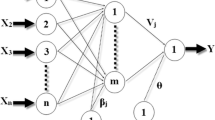Abstract
The measurement of wood surface roughness is performed once the machining process is completed. It requires considerable time since the measurement is performed at slow speed. The objective of this study was to develop a method to evaluate the surface roughness of paper birch wood while routing. For this purpose, a number of transducers were mounted on the router spindle and also in the proximity of the workpiece and cutting zone. Signals were acquired during a wide range of cutting conditions and analyzed. Statistical regression and artificial neural networks were employed to establish relationships between the signals and the actual cutting depth and surface roughness. The sensor selection and the feasibility of the sensor placement were determined. The models were subjected to a validation procedure to confirm their performance. The placement of the microphone at constant distance from the cutting zone was determined to be the most useful one. A model able to predict the surface roughness of routed paper birch wood regardless of the depth of cut was produced. The performance of the model was valid independently of the length of the workpiece.







Similar content being viewed by others
References
Byrne G, Dornfeld D, Inasaki I, Ketteler G, König W, Teti R (1995) Tool condition monitoring (TCM)—the status of research and industrial application. Ann CIRP 44(2):541–567
Coit DW, Jackson BT, Smith AE (1998) Static neural network process models: considerations and case studies. Int J Prod Res 36(11):2953–2967
Delio T, Tlusty J, Smith S (1992) Use of audio signals for chatter detection and control. ASME J Eng Ind 114(2):146–157
Demuth H, Beale M, Hagan M (2008) Neural network toolbox™ user’s guide. The MathWorks, Inc., Nantic, pp 907
Iskra P, Hernández RE (2009) The influence of cutting parameters on the surface quality of routed paper birch and surface roughness prediction modeling. Wood Fiber Sci 41(1):28–37
Iskra P, Tanaka C (2005) The influence of wood fiber direction, feed rate, and cutting width on sound intensity during routing. Holz Roh-Werkst 63(3):167–172
Iskra P, Tanaka C (2006) A comparison of selected acoustic signal analysis techniques to evaluate wood surface roughness produced during routing. Wood Sci Technol 40(3):247–259
Lemaster RL, Lu L, Jackson S (2000a) The use of process monitoring techniques on a CNC wood router. Part 1. Sensor selection. Forest Prod J 50(7/8):31–38
Lemaster RL, Lu L, Jackson S (2000b) The use of process monitoring techniques on a CNC wood router. Part 2. Use of vibration accelerometer to monitor tool wear and workpiece quality. Forest Prod J 50(9):59–64
Mehta NK, Pandey PC, Chakravarti G (1983) An investigation of tool wear and the vibration spectrum in milling. Wear 91(2):219–234
The MathWorks Inc. (2008) Statistics toolbox™ user’s guide. The MathWorks Inc., Natick, pp 2112
Tönshoff HK, Wulfsberg JP, Kals HJJ, König W (1988) Developments and trends in monitoring and control of machining processes. Ann CIRP 37(2):611–622
Weis W (1994) Survey: industrial applications of TCM systems. WBK, University of Karlsruhe, Germany (cited by Byrne et al. 1995, Lemaster et al. 2000a)
Acknowledgments
This research was supported by Développement Économique Canada and by the Fonds. Québécois de la Recherche sur la Nature et les Technologies (FQRNT).
Author information
Authors and Affiliations
Corresponding author
Rights and permissions
About this article
Cite this article
Iskra, P., Hernández, R.E. Toward a process monitoring of CNC wood router. Sensor selection and surface roughness prediction. Wood Sci Technol 46, 115–128 (2012). https://doi.org/10.1007/s00226-010-0378-7
Received:
Published:
Issue Date:
DOI: https://doi.org/10.1007/s00226-010-0378-7




